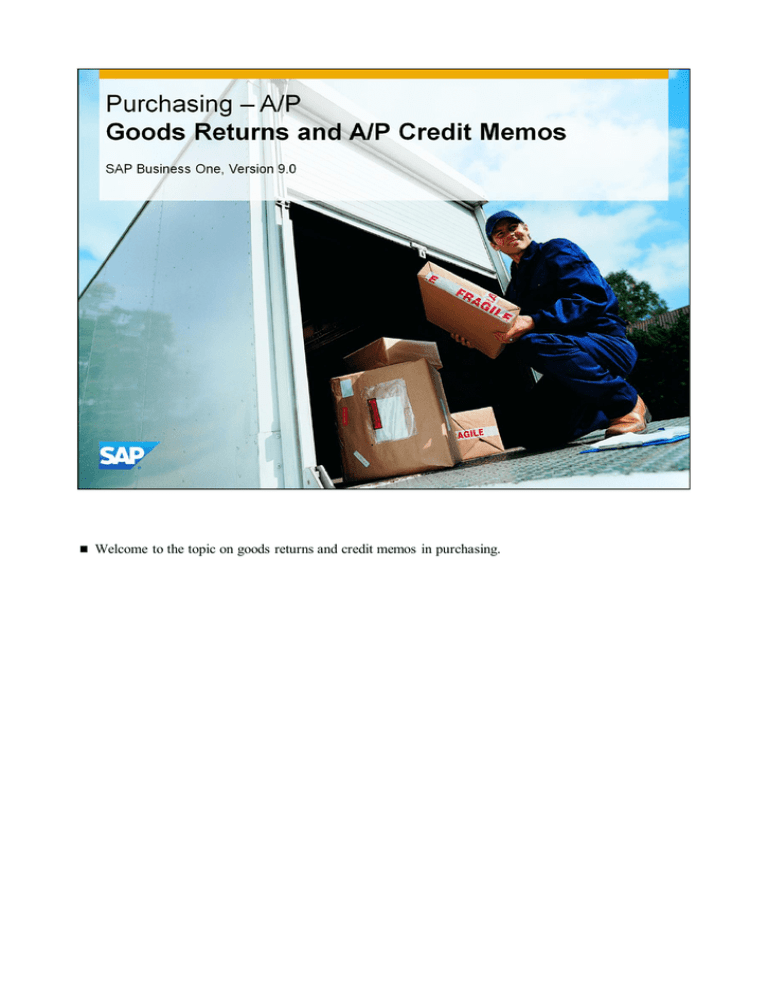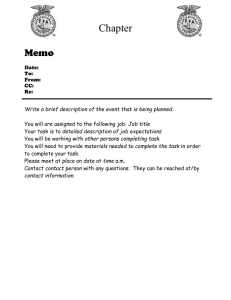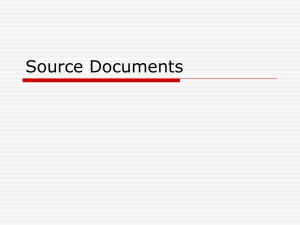the topic on goods returns and credit
advertisement

Welcome to the topic on goods returns and credit memos in purchasing. In this topic, we will look at how and when you create a goods return or credit memo for purchases. Occasionally, delivered goods do not meet your quality standards. You return these items to the vendor for credit either before or after you receive the invoice. When you need to correct a problem in purchasing, you can easily research the status of the vendor’s invoice and resolve the issue. Even when you receive everything exactly as ordered from a vendor, you can discover that items were damaged in transit. We will examine the options available in SAP Business One for returning poor quality items or damaged goods And look at how to receive credit for items that we have already paid for. A goods return document is used to return items that have been received but not yet invoiced. An A/P credit memo is used to return goods and to receive credit for items or services that have been invoiced. Imagine that we ordered 20 scanners. The vendor delivered all 20 and we received them on a goods receipt PO. Then we discovered that 2 were damaged in transit. We can use the goods return to document the return of the scanners to the vendor for credit. You can use a Goods Return document as long as no A/P invoice exists for the goods receipt PO. If you have already entered an A/P Invoice for the transaction, then you must use the A/P Credit Memo function to carry out quantity and value-based corrections in the system. Think of the Goods Returns as the clearing document for a Goods Receipt PO. When you enter a goods returns, the goods are issued from the warehouse and the quantities are reduced. If your company runs perpetual inventory, SAP Business One creates the relevant accounting postings to update the stock values as well. If you return goods to a vendor to exchange and later receive a shipment, you can either enter a goods receipt PO without a reference to a purchase order in the system or duplicate one of the preceding documents. Starting with release 8.81, it is possible to open the purchase order when a return is made. This allows you to base the new delivery on the original purchase order. Note that when a Goods Return is created without being based on a previous document, the value of a moving average item is the current item cost calculated for the item and not the unit price entered in the goods return document. Now let us imagine another scenario. We ordered 50 CD boxes. The vendor delivered the items and the invoice. After we entered the A/P invoice into SAP Business One but had not yet paid the vendor, we discovered that 5 boxes were defective. Since the invoice had already been created, we cannot create a goods return with reference to either the goods receipt PO nor the A/P invoice. Instead we ask the vendor for a credit for our returned items. We create a credit memo to document that we have returned the items to vendor for credit. The credit memo has the same effect as the goods return. The credit memo updates the stock quantities and corrects the values in accounting. Since in this case, we were able to create the credit memo by copying the items from the A/P invoice, the system finds the same accounts that were used to post the invoice and posts a negative value to them. However, in some cases, it may not be appropriate to copy items to a credit memo from an invoice. For example, if the credit was for a price difference rather than for returning items or if the credit referred to an A/P invoice that we had already paid. There are is also an option to create a credit memo without reducing stock accounts. Perhaps your vendor is giving you credit for a missing discount on an item or refunding your purchase price. In those cases, you can select the checkbox “Without Qty Posting”. This indicator allows you to create an item-type credit memo that affects only the price. In the example in the graphic, a 10% discount was missing on the vendor invoice for 100, so an A/P invoice was created for 100 and a payment was made for the full amount. When the issue is discovered, the vendor sends a credit memo for the discounted amount of 10. The Without Qty Posting checkbox is used to create a credit memo in SAP Business One that does not reduce stock quantity but records the monetary change in the General Ledger. The method you use to create a credit memo depends the status of the A/P invoice, Open or Closed, and whether the credit memo is related to a specific invoice. When you can identify the related invoice and the invoice is open, you create a credit memo by copying from the original invoice. The credit must be related to a specific, single invoice. The invoice status must be open. You can create a credit memo either for the total amount or a partial amount. A credit memo for the full invoice quantity will reverse the original invoice. The invoice will no longer appear for payment. A credit memo for less than the original invoice quantity will reduce the total invoice amount due. If the related invoice is closed or the credit is related to multiple invoices, then you do not copy from the invoice. Instead you create a credit memo without reference to an invoice. As always, you can create a credit memo for a full amount or partial amount. When you create a credit memo without copying from the original invoice, the credit memo reduces the total balance due to the vendor. Starting from release 8.8, the values in the journal entry created by an A/P credit memo that is not created from copying from another document are based on the current value calculated for the returned items. This is why it is best to copy an invoice whenever possible. Another option besides creating Goods Returns or Credit Memo documents is to cancel the original document. Business One gives you the ability to cancel marketing documents such as a Goods Receipt PO or A/P invoice. When you cancel a marketing document, a new ‘cancellation’ document is created during each cancellation procedure. Both the reversing and reversed documents are closed automatically and fully reconciled. For example, a goods receipt PO is incorrectly entered. The user cancels the goods receipt PO and a cancellation document is created automatically. The purchase order is re-opened after cancellation, and can be used as a base document to create a new goods receipt PO. In this demo, we will process a goods return. We will enter an A/P credit memo to process a credit from the vendor for billing too large an amount on a recent invoice. Here are some key points to take away: A goods return is used to return items received on a goods receipt PO. If you need to fully or partially reverse an A/P invoice, then use an A/P credit memo. A/P credit memos and goods return documents correct both quantities and values. To create give a credit without an effect on inventory use the Qty. Without Posting checkbox. When a credit is related to a specific invoice and the invoice is open, you can create a credit memo by referencing the original invoice. If the related invoice is closed or if the credit is related to multiple invoices, then you must create a credit memo without referencing a base document. You have completed the topic for goods returns and credit memos in purchasing. Thank you for your time.

